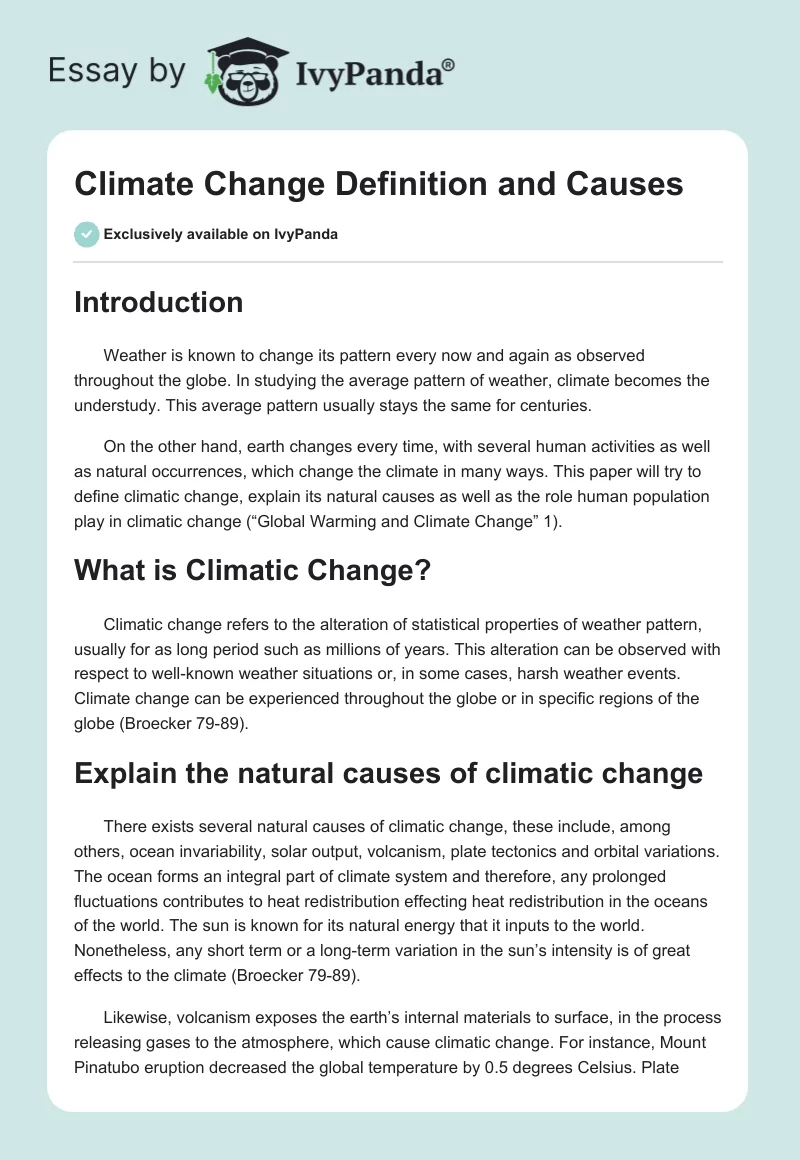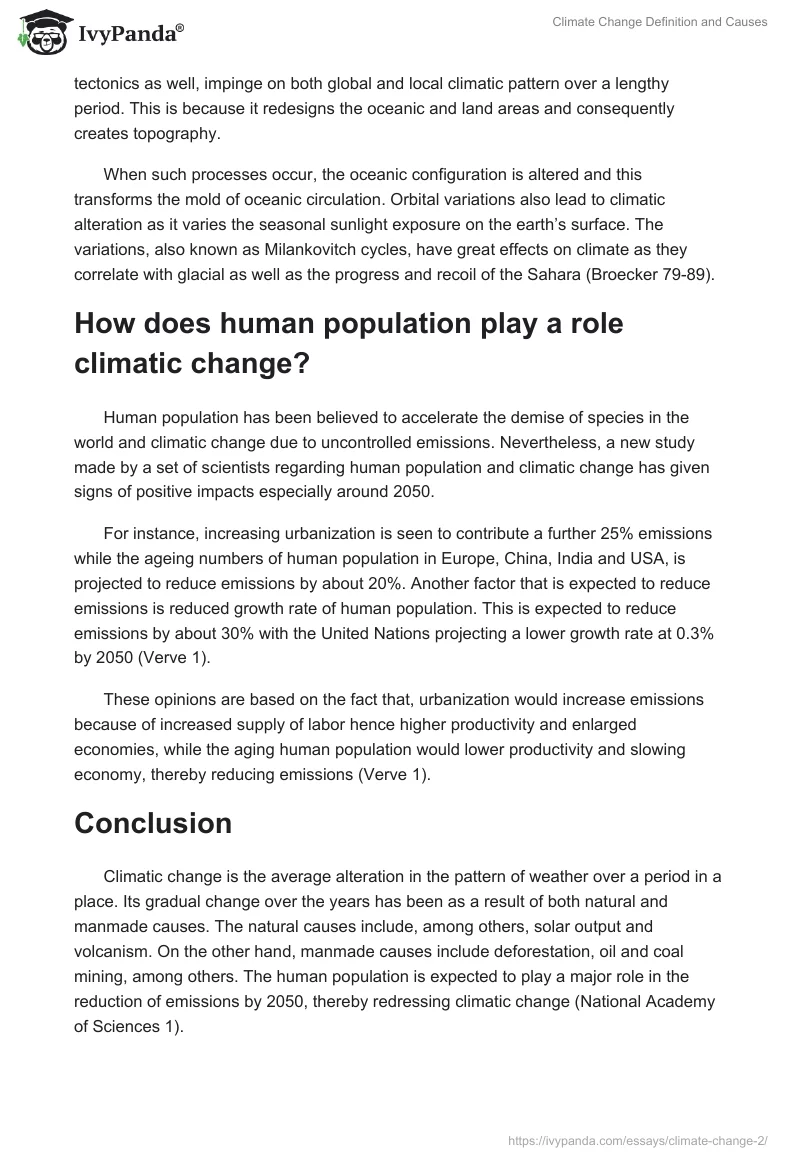Introduction
Weather is known to change its pattern every now and again as observed throughout the globe. In studying the average pattern of weather, climate becomes the understudy. This average pattern usually stays the same for centuries.
On the other hand, earth changes every time, with several human activities as well as natural occurrences, which change the climate in many ways. This paper will try to define climatic change, explain its natural causes as well as the role human population play in climatic change (“Global Warming and Climate Change” 1).
What is Climatic Change?
Climatic change refers to the alteration of statistical properties of weather pattern, usually for as long period such as millions of years. This alteration can be observed with respect to well-known weather situations or, in some cases, harsh weather events. Climate change can be experienced throughout the globe or in specific regions of the globe (Broecker 79-89).
Explain the natural causes of climatic change
There exists several natural causes of climatic change, these include, among others, ocean invariability, solar output, volcanism, plate tectonics and orbital variations. The ocean forms an integral part of climate system and therefore, any prolonged fluctuations contributes to heat redistribution effecting heat redistribution in the oceans of the world. The sun is known for its natural energy that it inputs to the world. Nonetheless, any short term or a long-term variation in the sun’s intensity is of great effects to the climate (Broecker 79-89).
Likewise, volcanism exposes the earth’s internal materials to surface, in the process releasing gases to the atmosphere, which cause climatic change. For instance, Mount Pinatubo eruption decreased the global temperature by 0.5 degrees Celsius. Plate tectonics as well, impinge on both global and local climatic pattern over a lengthy period. This is because it redesigns the oceanic and land areas and consequently creates topography.
When such processes occur, the oceanic configuration is altered and this transforms the mold of oceanic circulation. Orbital variations also lead to climatic alteration as it varies the seasonal sunlight exposure on the earth’s surface. The variations, also known as Milankovitch cycles, have great effects on climate as they correlate with glacial as well as the progress and recoil of the Sahara (Broecker 79-89).
How does human population play a role climatic change?
Human population has been believed to accelerate the demise of species in the world and climatic change due to uncontrolled emissions. Nevertheless, a new study made by a set of scientists regarding human population and climatic change has given signs of positive impacts especially around 2050.
For instance, increasing urbanization is seen to contribute a further 25% emissions while the ageing numbers of human population in Europe, China, India and USA, is projected to reduce emissions by about 20%. Another factor that is expected to reduce emissions is reduced growth rate of human population. This is expected to reduce emissions by about 30% with the United Nations projecting a lower growth rate at 0.3% by 2050 (Verve 1).
These opinions are based on the fact that, urbanization would increase emissions because of increased supply of labor hence higher productivity and enlarged economies, while the aging human population would lower productivity and slowing economy, thereby reducing emissions (Verve 1).
Conclusion
Climatic change is the average alteration in the pattern of weather over a period in a place. Its gradual change over the years has been as a result of both natural and manmade causes. The natural causes include, among others, solar output and volcanism. On the other hand, manmade causes include deforestation, oil and coal mining, among others. The human population is expected to play a major role in the reduction of emissions by 2050, thereby redressing climatic change (National Academy of Sciences 1).
Works Cited
Broecker, Wallace. “The Great Ocean Conveyor”. Oceanography. vol. 4, No. 2, 1991. pp. 79-89.
“Global Warming and Climate Change”. PART 1: What is climate change? 03. Jan. 2006. 15. 04. 2011.
National Academy of Sciences. “Global Warming facts & our future”. Science Museum. 14. April. 2011.14. Web.
Verve, Vegan. “Study: Population Dynamics Play Large Role In Climate Change”. About my Planet. 19. Oct. 2010. Web.


